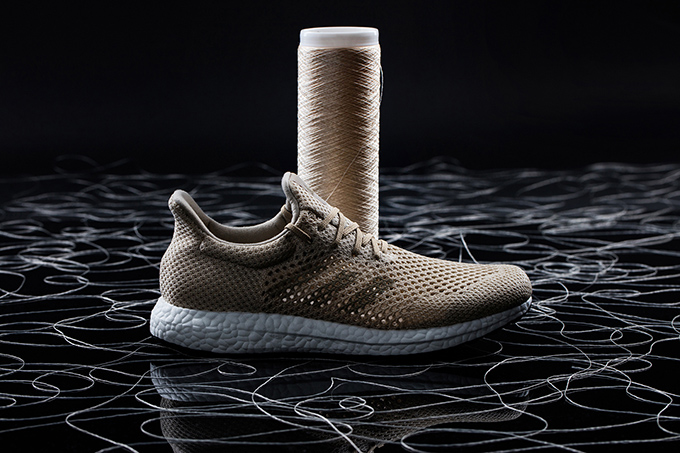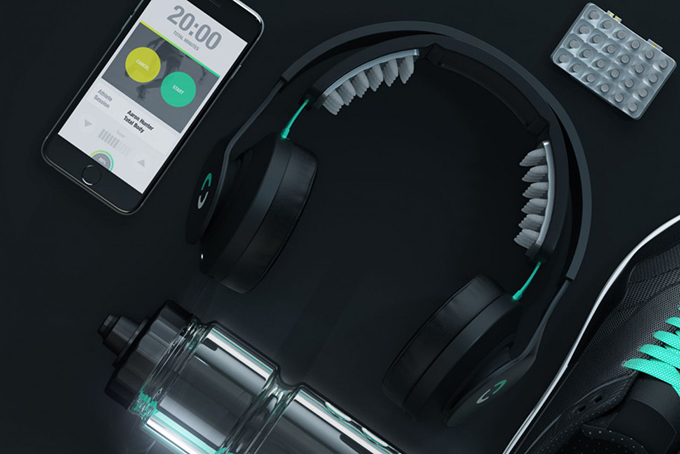Search the latest and greatest job opportunities in sport

We live in the age of the ‘quantified self’, where we can not only measure all aspects of our own performance, but compare it to that of friends, strangers and professional athletes as well. This phenomenon will soon get even more sophisticated, and as our 2017 trends series continues, we find other areas of the sports equipment industry advancing rapidly too.

1. Invisible wearables
The craze for wearable technology shows no signs of abating, but in 2017, we may actually see fewer people sporting chunky digital wrist accoutrements as they work out in the gym or pound the pavements.
That’s because the next trend for wearables is discretion. Back in 2014, tech analyst firm Gartner predicted that 30% of wearable technology would be invisible by 2017 . They may be proved right.
Products like Under Armour’s HealthBox and CES’s Hexoskin have already stitched almost imperceptible fitness trackers inside biometric shirts that can provide even more personal health and performance data than traditional wearables.
Under Armour are also pioneering a range of ' connected footwear ' as we enter 2017, which will connect with their own MapMyRun app.
Also gaining more traction in 2017 will be adhesive gadgets no bigger than a sticking plaster, such as the CardioCycle SenseOn, which provides all the same progress-tracking health and fitness data and syncs wirelessly to smartphones.
And things could get even more intricate in the form of fitness tracking tattoos. Chaotic Moon – acquired in the summer by Accenture-owned Fjord – have produced prototypes of Tech Tats, which use electro-conductive ink to connect fitness sensors pressed against the skin.

2. Sustainability
As if it isn't enough that an item of clothing can now record your heart rate, sweat volume, step count and run distance, there now seems to be demand that the product itself is also environmentally friendly.
The recent innovation push from sportswear giant adidas is into the area of sustainability. It claims to be " setting new standards regarding the functionality of renewable textiles " with new prototype trainers that could raise the bar for the industry in 2017.
Made of Biosteel fibre and silk biopolymers, the adidas FutureCraft Biofabric shoe is 100% biodegradable, as well as 15% lighter than traditional synthetic fibre materials. When they need replacing after a couple of years, owners can simply dissolve them in the sink using a special enzyme solution. Adidas have also produced trainers made entirely from rubbish retrieved from the ocean just off the Maldives. After an initial run of 7,000, they will release a million more UltraBOOST Uncaged Parleys in 2017.
Transparency is clearly important to sport manufacturers, and that’s reflected by the numbers signing up to officially recognised certification labels that rubber-stamp their claims to robust ecological and social practices. Among these are bluesign and the Global Organic Textile Standard, as well as the Fair Weather Foundation, which is mainly concerned with fair labour standards and workers’ rights.
3. Robotics
Coaches in American football and rugby try to reduce contact injuries sustained in training by using tackle bags. The trouble is, there’s a big difference between grappling with a static sack in a training session and taking down an opponent moving at speed in a competitive match.
This is why robotics experts have stepped in to produce the MVP (Mobile Virtual Player). Controlled remotely, it replicates the size, weight, shape, speed and human motion of an opponent or training partner. It doesn’t mind being flattened, because it gets straight back up again. The risk of impact injury and fatigue caused by athlete-on-athlete training is therefore eradicated.
Having gained traction with several NFL teams, the MVP concept is now set to expand into other sports and territories in 2017. Essentially it can be used in any discipline where there’s a risk of injury through impact or repetition, giving poor souls such as ice hockey goalkeepers and the half-backs in rugby union a much-needed break.
Talking of breaks, groundsmen may have a reduced workload in 2017 thanks to another innovative example of robotics on the sports field. The Intelligent One is the first automatic robot painter of line markings. It can accurately paint the appropriate lines on a football field in just half an hour without any human intervention.

4. Analytics to go amateur
Until now, athlete analytics has been the preserve of elite-level sport. Market leaders such as Opta, ProZone and Catapult work with hundreds of professional teams across the globe, providing stats under a myriad of performance metrics.
But an under-the-radar acquisition deal completed last summer indicates that hi-tech performance insights such as heat maps, game impact measurements and training intensity will be accessible to the average Sunday morning amateur in 2017.
Catapult bought PlayerTek , a small company in Dundalk, Ireland, who make GPS player tracking technology. Although they have clients in professional sport, their main focus is on selling to the amateur ranks by making their gadgets simple and affordable.
Now, supported by Catapult's global power and influence in the sector, expect to see wearable player tracking technology making its presence felt on windswept public playing fields and amateur sports clubs around the globe.

5. Neurostimulation
As we enter 2017, will brain-zapping headphones be the next big thing in athletic performance enhancement? Four-time Olympic gold medallist Michael Johnson certainly thinks so.
"Halo's doing something that we've never seen before, the sports market's never seen before, and it speaks to exactly what we're trying to do,” says the USA sprinting legend of Halo Neuroscience 's revolutionary product.
The headphones deliver electric pulses through the scalp to the motor cortex; the part of our brains that controls various muscles. The increased neuronal excitability improves athletes' strength, skill, explosiveness and endurance. It puts the athlete in a 'temporary state of hyper-learning' that lasts about an hour.
Tests with the USA ski jumping team saw them achieve 13% improvement in propulsion force and 11% gain in jump smoothness after undergoing neuropriming. Feedback from elite basketball, American football and baseball players, pianists and powerlifters has also been positive.
Previously used to treat epilepsy and stroke victims, it is thought this process could be expanded to affect other parts of the brain as well as the motor cortex; those that control other cognitive and physical functions. "We believe we can raise the ceiling of what is possible," says co-founder Daniel Chao.
This article was written by the GlobalSportsJobs insight team.
Give your career in sport a boost with the latest live vacancies in Sporting Goods , or create an account today and stay up to date with all the latest industry knowledge, events and jobs in sport.
Search the latest and greatest job opportunities in sport